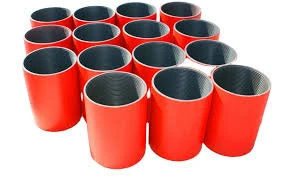- Afrikaans
- Albanian
- Amharic
- Arabic
- Armenian
- Azerbaijani
- Basque
- Belarusian
- Bengali
- Bosnian
- Bulgarian
- Catalan
- Cebuano
- Corsican
- Croatian
- Czech
- Danish
- Dutch
- English
- Esperanto
- Estonian
- Finnish
- French
- Frisian
- Galician
- Georgian
- German
- Greek
- Gujarati
- Haitian Creole
- hausa
- hawaiian
- Hebrew
- Hindi
- Miao
- Hungarian
- Icelandic
- igbo
- Indonesian
- irish
- Italian
- Japanese
- Javanese
- Kannada
- kazakh
- Khmer
- Rwandese
- Korean
- Kurdish
- Kyrgyz
- Lao
- Latin
- Latvian
- Lithuanian
- Luxembourgish
- Macedonian
- Malgashi
- Malay
- Malayalam
- Maltese
- Maori
- Marathi
- Mongolian
- Myanmar
- Nepali
- Norwegian
- Norwegian
- Occitan
- Pashto
- Persian
- Polish
- Portuguese
- Punjabi
- Romanian
- Russian
- Samoan
- Scottish Gaelic
- Serbian
- Sesotho
- Shona
- Sindhi
- Sinhala
- Slovak
- Slovenian
- Somali
- Spanish
- Sundanese
- Swahili
- Swedish
- Tagalog
- Tajik
- Tamil
- Tatar
- Telugu
- Thai
- Turkish
- Turkmen
- Ukrainian
- Urdu
- Uighur
- Uzbek
- Vietnamese
- Welsh
- Bantu
- Yiddish
- Yoruba
- Zulu
bull plug dimensions
Understanding Bull Plug Dimensions A Comprehensive Guide
Bull plugs are essential components widely used in various industries, serving both functional and safety purposes. These fittings are commonly found in systems involving fluids, ensuring proper sealing and protection against leakage. Whether you're a seasoned professional or a newcomer to the field, understanding bull plug dimensions is crucial for selecting the right component for your application.
What is a Bull Plug?
A bull plug is designed to seal an opening in a pipe or vessel, preventing the escape of fluids or gases. They come in various shapes and sizes, with specific dimensions tailored for different uses. Typically constructed from materials such as steel, brass, or plastic, bull plugs are characterized by their durable nature and ability to withstand pressure.
Key Dimensions of Bull Plugs
1. Thread Size The thread size is one of the most critical dimensions when selecting a bull plug. It is measured in inches or millimeters and refers to the outer diameter of the thread. Standard thread sizes include NPT (National Pipe Thread), BSP (British Standard Pipe), and ISO threads. Choosing the correct thread size ensures compatibility with existing piping systems.
2. Length Bull plugs come in various lengths, which can affect how they fit within the various assemblies. A shorter plug may be appropriate for compact areas, while a longer plug could be beneficial in larger valves or flanges. It’s essential to measure the depth of the opening where the plug will be installed to determine the length needed.
3. Head Diameter The head diameter refers to the overall width of the bull plug at its top. This dimension is crucial when a wrench or similar tool is used for installation or removal. A wider head diameter can provide better leverage while ensuring a secure fit.
bull plug dimensions

4. Material Thickness The thickness of the plug's material determines its durability and strength. A thicker plug is generally more robust and can withstand higher pressures, making it suitable for heavy-duty applications. Conversely, a thinner plug might suffice in lighter operations.
5. Pressure Rating Each bull plug has a specified pressure rating, which indicates the maximum internal pressure it can handle without failure. This rating is vital for ensuring safety and reliability in high-pressure systems. It's essential to match the pressure rating with the operational requirements of your application.
Choosing the Right Bull Plug
Selecting the appropriate bull plug involves more than just understanding its dimensions. It requires a comprehensive evaluation of your specific needs. Consider the following factors
- Application Type Determine whether the bull plug will be used in high-pressure applications (like oil and gas) or lower-pressure settings (such as water systems). - Corrosion Resistance Depending on the environment in which the bull plug will be installed, corrosion resistance becomes vital. Stainless steel or plastic plugs may be preferable in corrosive environments. - Temperature Range Different materials handle temperature variations differently. Ensure that the bull plug you choose can withstand the temperature range of the fluids or gases it will encounter.
Conclusion
In conclusion, understanding bull plug dimensions is essential for ensuring a proper fit and reliable operation in any sealing application. By taking into account the thread size, length, head diameter, material thickness, and pressure rating, one can select the right bull plug tailored to specific needs. Additionally, evaluating the application type, corrosion resistance, and temperature range will further ensure that your chosen plug performs effectively and safely in its intended environment. Whether in plumbing, automotive, or industrial applications, the right bull plug is pivotal for system integrity.
-
Tubing Pup Joints: Essential Components for Oil and Gas OperationsNewsJul.10,2025
-
Pup Joints: Essential Components for Reliable Drilling OperationsNewsJul.10,2025
-
Pipe Couplings: Connecting Your World EfficientlyNewsJul.10,2025
-
Mastering Oilfield Operations with Quality Tubing and CasingNewsJul.10,2025
-
High-Quality Casing Couplings for Every NeedNewsJul.10,2025
-
Boost Your Drilling Efficiency with Premium Crossover Tools & Seating NipplesNewsJul.10,2025







